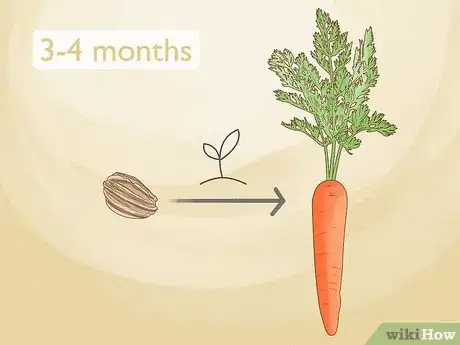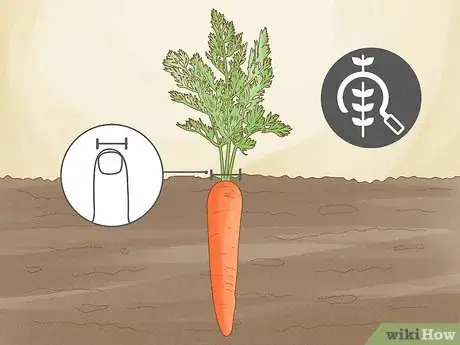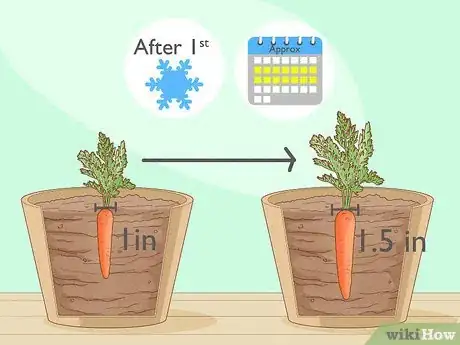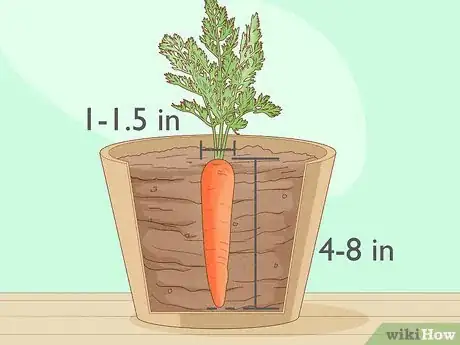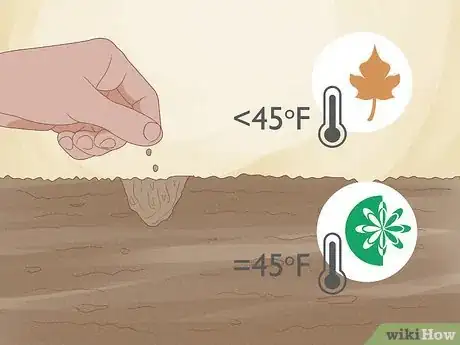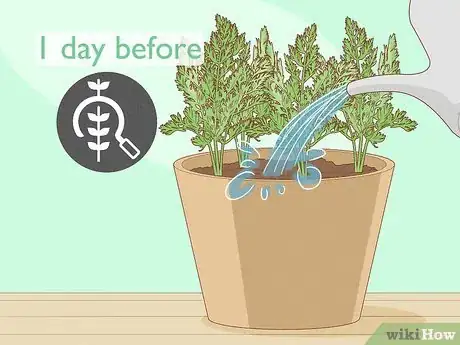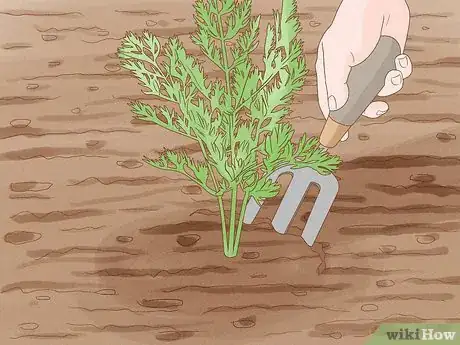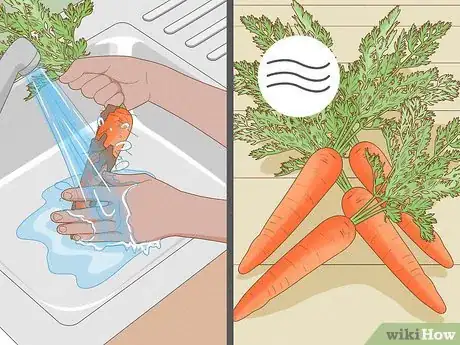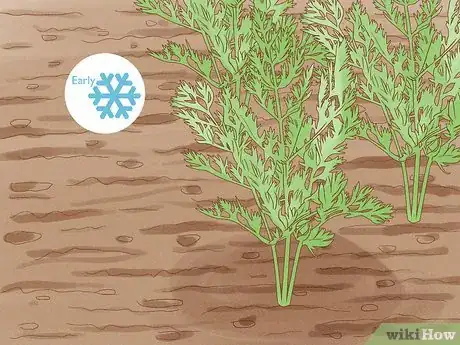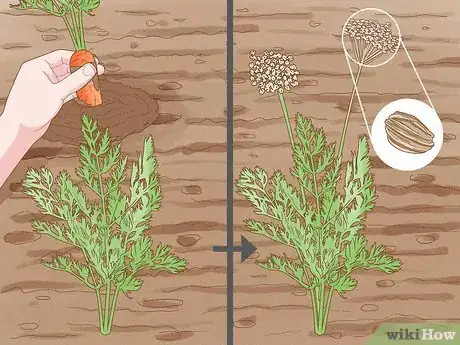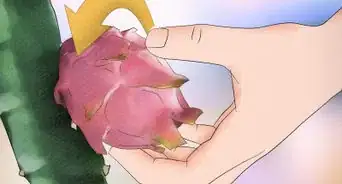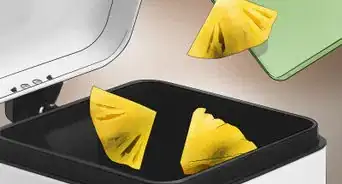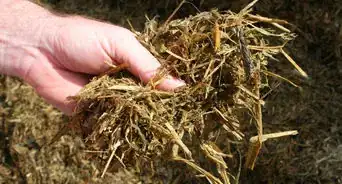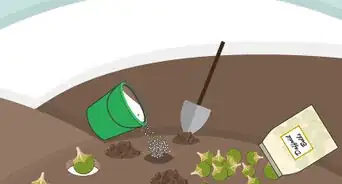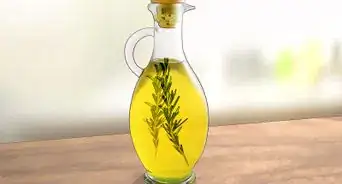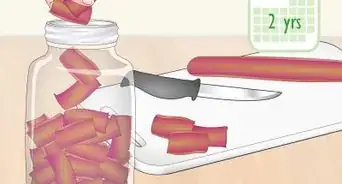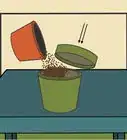This article was co-authored by wikiHow Staff. Our trained team of editors and researchers validate articles for accuracy and comprehensiveness. wikiHow's Content Management Team carefully monitors the work from our editorial staff to ensure that each article is backed by trusted research and meets our high quality standards.
There are 16 references cited in this article, which can be found at the bottom of the page.
wikiHow marks an article as reader-approved once it receives enough positive feedback. In this case, 100% of readers who voted found the article helpful, earning it our reader-approved status.
This article has been viewed 54,134 times.
Learn more...
One reason carrots are such a great choice for a home garden is their flexibility. You can keep planting these easygoing roots every few weeks for most of spring, summer, and autumn, so you always have some ready to harvest in your garden. Your carrots' flavor will change depending on the weather and how long you've let them grow.[1] You could harvest one carrot every couple days to see how the taste changes, but there are easier ways to tell when your carrot is most likely ready to eat.
Steps
How do you know when carrots are ready to pick?
-
1Most carrots are ready to harvest when they're as wide as your thumb. For small, sweet carrots, harvest when the top of the carrot is about 1⁄2 inch (1.3 cm) across.[4] For larger, less sweet carrots, wait until the top is 1 to 1.5 inches (2.5 to 3.8 cm) across.[5]
- At this stage, the carrots often poke through the top of the soil. If not, just brush away the dirt until you can see the top of the carrot.[6]
- There are also tiny mini-carrots and giant Imperator varieties. These aren't as common in home gardens, but you can always look up your variety name online to be sure.[7]
-
2You can wait until the first frost or two for autumn carrots. Carrots get sweeter after a freeze (and can survive a light frost just fine).[8] If a frost is coming up, go ahead and wait before harvesting, even if they're at their peak width of 1 to 1.5 inches (2.5 to 3.8 cm). Just don't wait more than 2 to 3 weeks past this point, or the carrots could get fibrous.[9]
- If you want to keep growing carrots after the heavy frosts begin, put a thick layer of shredded leaves over the carrot tops. About 18 inches (46 cm) should stop the ground from freezing.[10]
What month do you harvest carrots?
-
1You can harvest carrots from midsummer to midwinter, if you plant in stages. The earliest, spring-planted crop will be ready around midsummer (June in the Northern Hemisphere). The last, autumn-planted crop will be ready to harvest around midwinter (December).[14]
-
2Check a local farmer's almanac for the best harvest month. If you want more exact dates, look up a guide for your area that tells you the typical week-by-week temperatures. You can plant spring carrots as soon as the last frost has passed and temperatures reach 45 °F (7 °C).[15] Plant autumn carrots before temperatures drop below this level, and protect them from the cold if the almanac predicts frozen ground.[16]
What is the best way to harvest carrots?
-
1
-
2Stick a garden fork into the soil next to the carrot. When you're ready to harvest, push your garden fork down into the soil to help loosen it and to break apart side roots.[19]
-
3Push the carrot to the side, then pull up. With the garden fork still in the soil, use your free hand to reach down and push the carrot root from side to side. Once it's not stuck to the soil anymore, pull the carrot gently up out of the ground, holding onto the root or the base of the greens.[20] Twist gently if the carrot is still stuck.[21]
How do you store carrots after harvesting?
-
1Brush off the dirt, then air dry them. There's no need to wash the carrots until you're ready to eat them. If you've harvested more carrots than you can eat in the next few days, just brush off the dirt by hand, then let them air dry for a few hours in the sun.[22]
- You can cut the greens off the carrots at this point.
-
2Store your carrots in a plastic bag in a humid fridge compartment. For best results, add some holes to the bag and put a slightly damp paper towel at the bottom of the drawer (not inside the bag). Kept this way, carrots can last at least 2 or 3 months.[23] In ideal conditions, carrots can keep for 5 months or even longer.[24]
- The warmer your fridge is, the more likely it is that your carrots will sprout. If you can, adjust your fridge to a low temperature setting, as close to freezing as it can get.[25]
Community Q&A
-
QuestionWhat if my carrots aren't orange when I pull them up. Will they ripen?
 NinoxTop AnswererNo, the color won't change. There are many colors of carrots; some can be yellow or purple.
NinoxTop AnswererNo, the color won't change. There are many colors of carrots; some can be yellow or purple. -
QuestionHow long can I keep carrots in a cool place like a refrigerator before using ?
 NinoxTop AnswererYou can keep the carrots 8 days in the refrigerator before using. You can extend the life if you pack the carrots in a bag, a towel or with newspaper.
NinoxTop AnswererYou can keep the carrots 8 days in the refrigerator before using. You can extend the life if you pack the carrots in a bag, a towel or with newspaper.
References
- ↑ https://orgprints.org/id/eprint/25315/1/Quality%20of%20carrots%20as%20affected%20by%20pre-%20and%20postharvest%20factors%20and%20processing.pdf
- ↑ https://www.canr.msu.edu/resources/how_to_grow_carrots
- ↑ https://www.tenthacrefarm.com/growing-carrots-year-round/
- ↑ https://www.almanac.com/plant/carrots
- ↑ https://www.canr.msu.edu/resources/how_to_grow_carrots
- ↑ https://gardenerspath.com/how-to/containers/grow-carrots-containers/#Harvesting
- ↑ https://www.grow-it-organically.com/carrot-varieties.html
- ↑ https://www.almanac.com/plant/carrots
- ↑ https://www.grow-it-organically.com/harvesting-carrots.html
- ↑ https://www.almanac.com/plant/carrots
- ↑ https://seedalliance.org/publications/results-california-carrot-organic-variety-trials-2014-2017/
- ↑ https://www.almanac.com/plant/carrots
- ↑ https://www.canr.msu.edu/resources/how_to_grow_carrots
- ↑ https://www.tenthacrefarm.com/growing-carrots-year-round/
- ↑ https://www.canr.msu.edu/resources/how_to_grow_carrots
- ↑ https://www.tenthacrefarm.com/growing-carrots-year-round/
- ↑ https://extension.umn.edu/vegetables/growing-carrots-and-parsnips-home-gardens#harvest-and-storage-191815
- ↑ https://harvesttotable.com/carrot_and_parsnip_growing_pro/
- ↑ https://extension.umn.edu/vegetables/growing-carrots-and-parsnips-home-gardens#harvest-and-storage-191815
- ↑ https://extension.umn.edu/vegetables/growing-carrots-and-parsnips-home-gardens#harvest-and-storage-191815
- ↑ https://harvesttotable.com/carrot_and_parsnip_growing_pro/
- ↑ https://www.vegetablegardenguru.com/storing-carrots.html
- ↑ https://www.vegetablegardenguru.com/storing-carrots.html
- ↑ https://escholarship.org/content/qt5pf563b3/qt5pf563b3.pdf
- ↑ https://extension.umn.edu/vegetables/growing-carrots-and-parsnips-home-gardens#harvest-and-storage-191815
- ↑ https://www.grow-it-organically.com/harvesting-carrots.html
- ↑ https://www.gardeningchannel.com/how-long-leave-carrots-in-ground/
- ↑ https://www.rhs.org.uk/advice/profile?pid=666
- ↑ https://www.almanac.com/plant/carrots
- ↑ https://www.gardeningchannel.com/how-long-leave-carrots-in-ground/
- ↑ https://www.almanac.com/plant/carrots
- ↑ https://gardenerspath.com/plants/vegetables/save-carrot-seeds/
- ↑ https://gardenerspath.com/how-to/containers/grow-carrots-containers/
- ↑ https://harvesttotable.com/carrot_and_parsnip_growing_pro/
- ↑ https://www.almanac.com/plant/carrots
